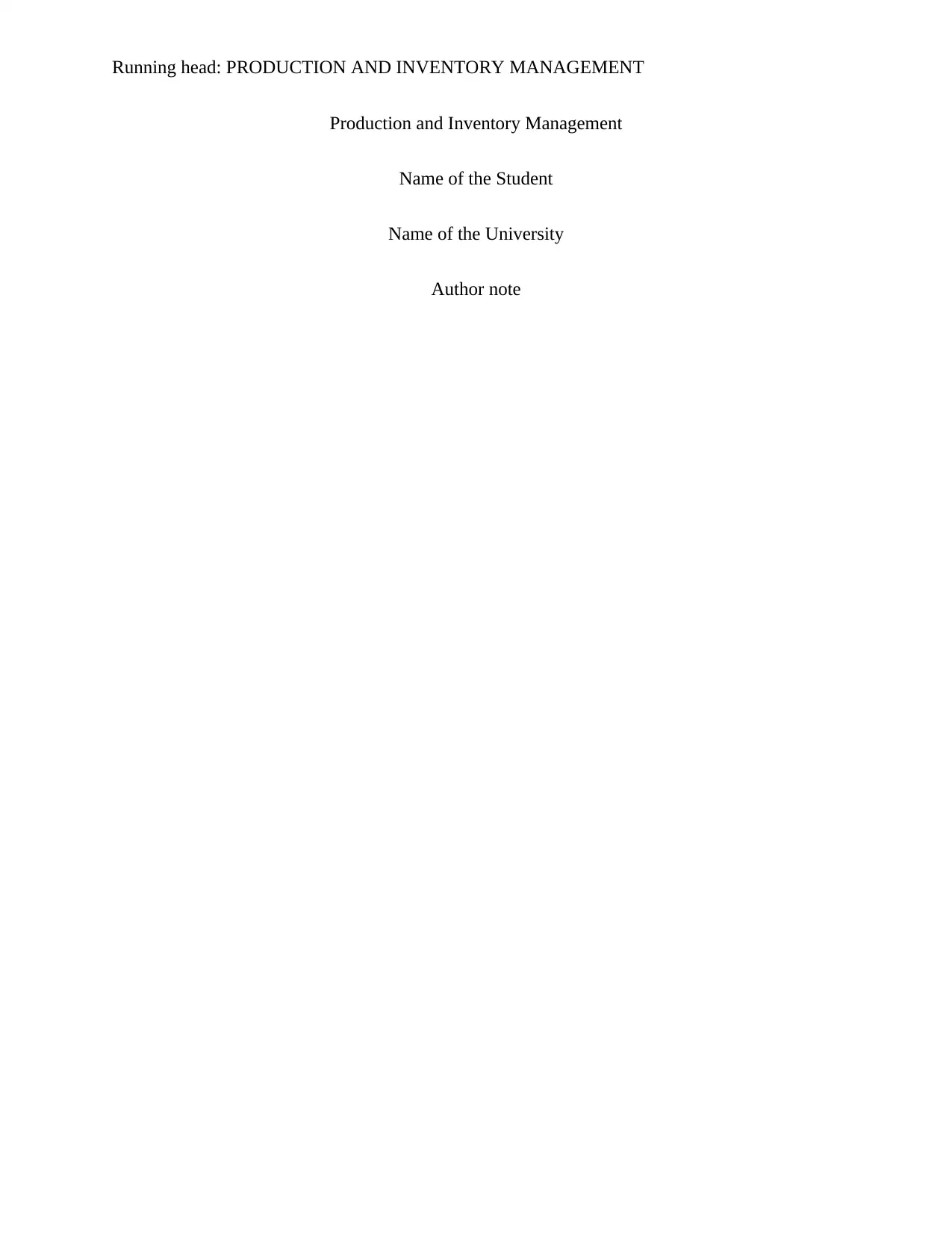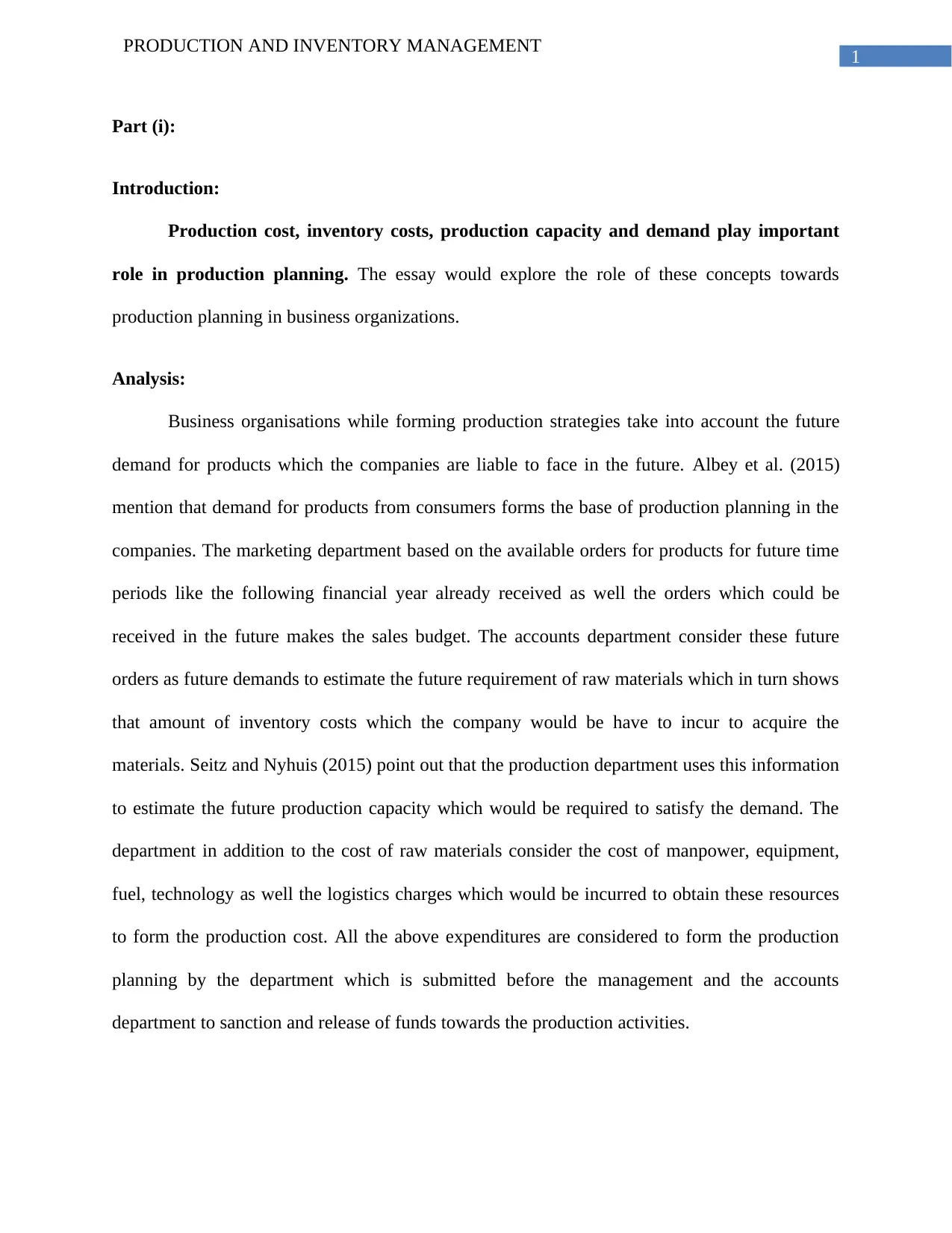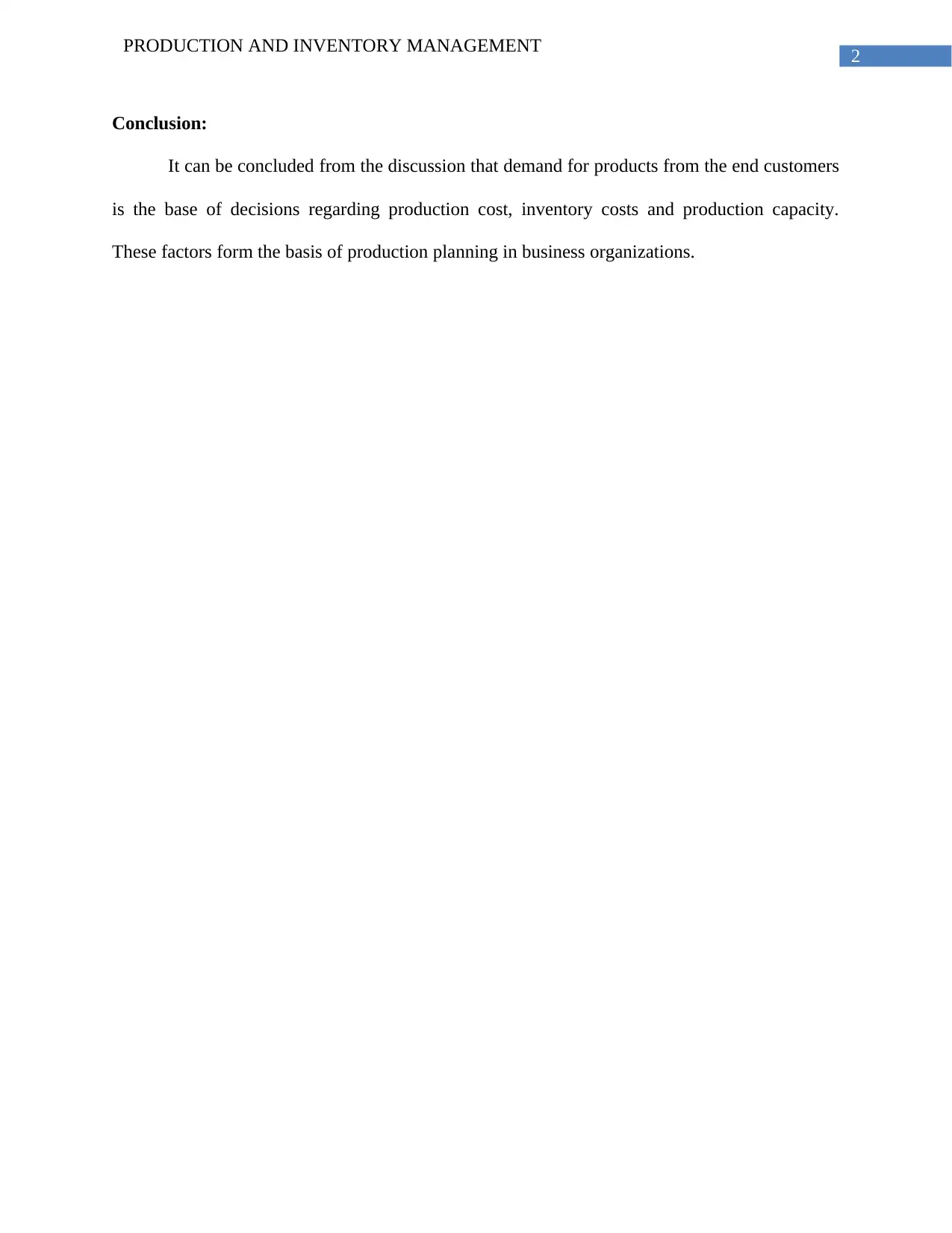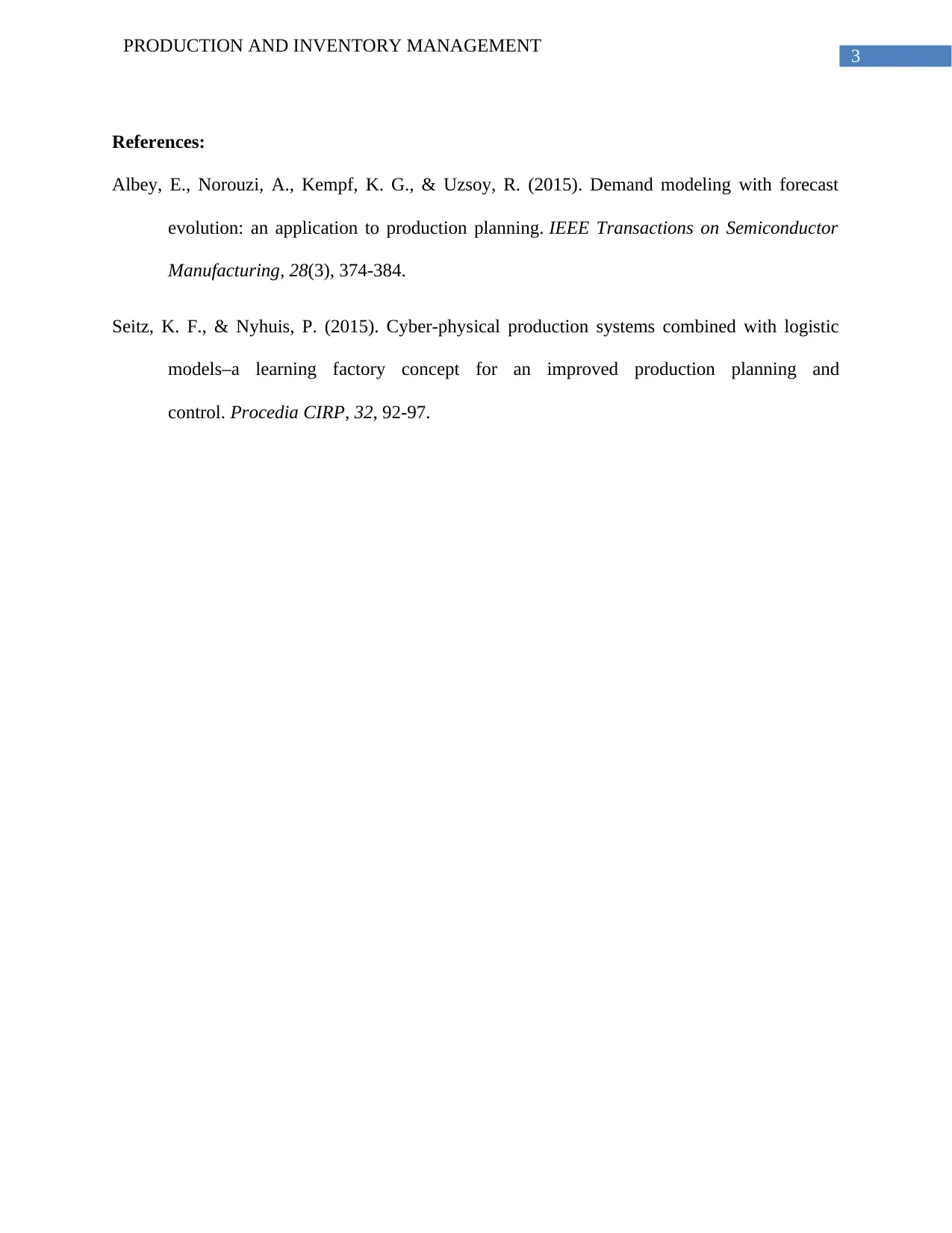Production and Inventory Management Report on Business Strategy
VerifiedAdded on 2021/10/11
|4
|434
|39
Report
AI Summary
This report provides a comprehensive analysis of production and inventory management, focusing on the crucial aspects of production planning. It emphasizes the significance of demand forecasting, where the report highlights how future demand, derived from sales budgets, forms the foundation for strategic decisions. It further explores how the accounts department uses these demands to estimate raw material requirements, subsequently determining inventory costs. The report delves into the role of the production department in estimating production capacity based on resource costs like manpower, equipment, and logistics. The analysis underscores how these factors collectively influence production planning, which is then presented to management for fund allocation. The report references sources such as Albey et al. (2015) and Seitz & Nyhuis (2015) to support its arguments, emphasizing the interconnectedness of demand, costs, and production capacity in shaping business strategies.
1 out of 4











![[object Object]](/_next/static/media/star-bottom.7253800d.svg)